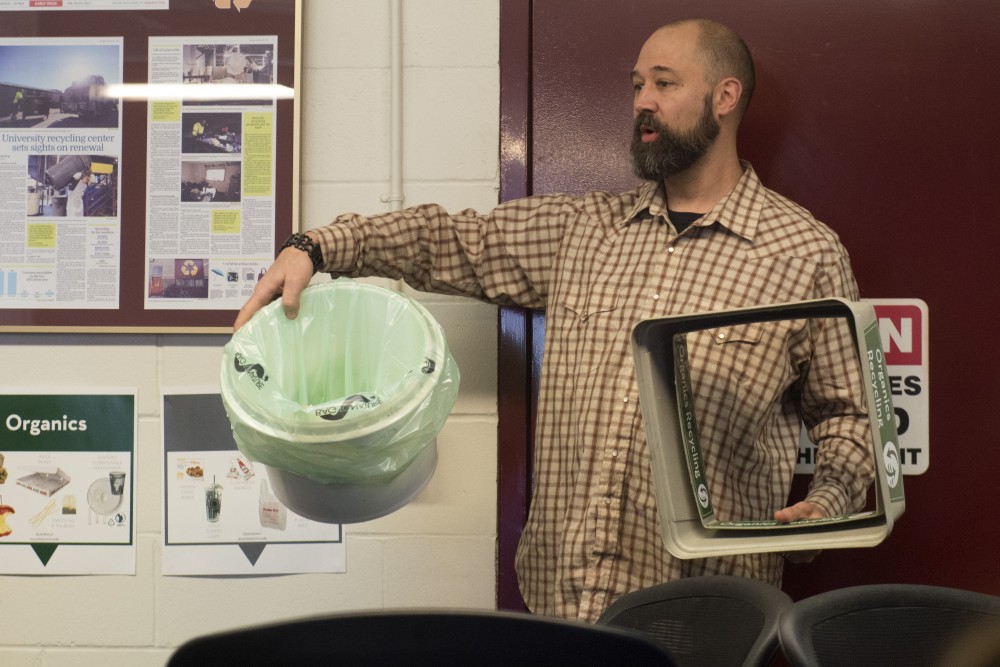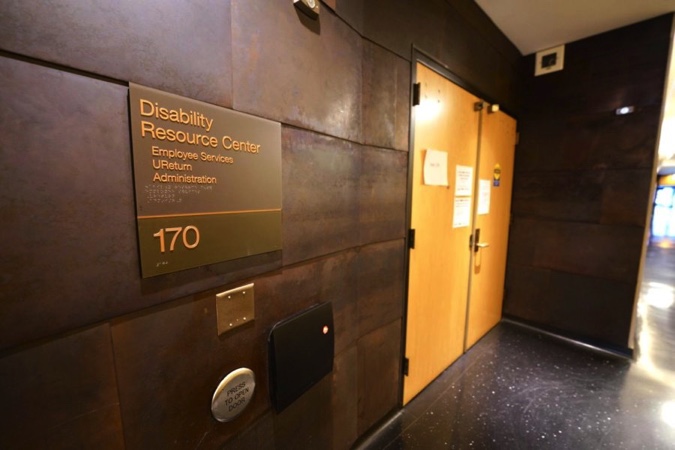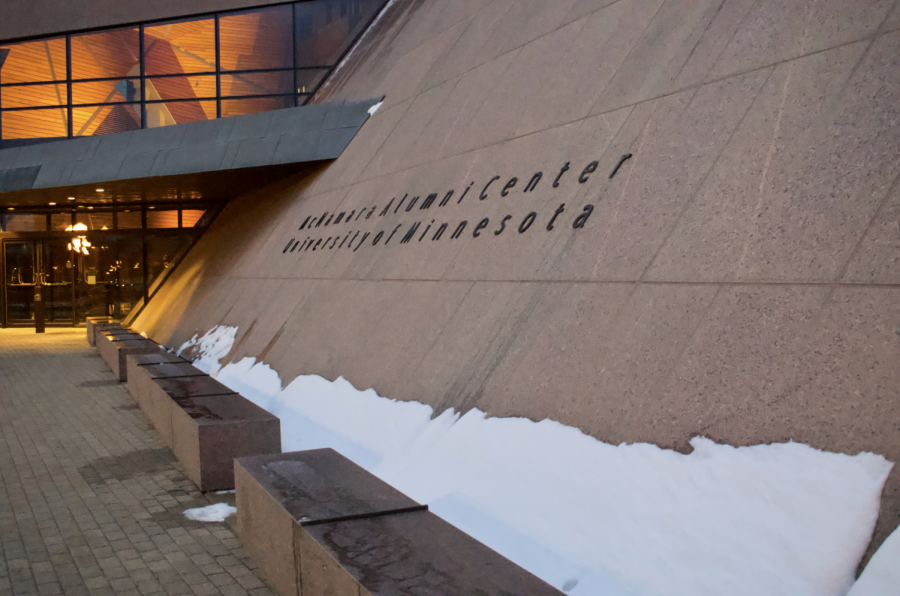The University of Minnesota’s Recycling Program recycled more than 3.2 million pounds of material in 2018. But with China’s ban on most imported recyclables, some of the University’s recycled material has no place to go.
More than one year after the Chinese government banned most recyclable materials from being imported into the county, the United States recycling market is crowded with products that previously would have been sold to China. At the University, the recycling program must store recyclables in their facilities for longer periods of time as the supply of recycled materials in the U.S. exceeds demand for it.
“It feels like we are waiting in line,” said Nick Kluge, waste services supervisor for the University’s recycling program.
However, the University’s program has avoided most of the ban’s negative impact because of the way material is recycled on campus.
The University’s program keeps recyclables in separate bins, which are later hand sorted. This lowers the amount of wrong recyclable material being mixed together, Kluge said. When material is mixed together, it becomes contaminated, making the material less valuable. The program is still receiving revenue for the recycled material they sell, which Kluge said is not as common in the industry as it once was.
Before China’s recycling ban was enacted last year, around 45 percent of the world’s recycled material was imported to China from 1988 to 2016, according to the Environmental and Energy Study Institute.
In some places around the country, certain recyclables are being incinerated because there is no market for the material at the moment. Minnesota has a statute that prohibits recycled material from being sent to a landfill or incinerated.
To stimulate the market for recyclable materials in Minnesota, an initiative in Gov. Tim Walz’s proposed budget would offer grants to help companies start and expand their use of recyclable materials. This would help provide the University with a bigger market to sell their materials. The University currently plans to store some recyclables in the University’s ReUse Program Warehouse because there is not enough room in the recycling facility.
While the recycling industry is struggling, some say the cause of the problem goes back to how much material consumers are using.
“Recycling and these things are all great, but we have to look at consumption,” said Todd Tanner, the University’s ReUse program coordinator. “A lot of people recycle a little bit here and there and think they are making a difference, but really they are just scratching the surface.”

The University’s unique approach to recycling
Around 40 percent of material disposed of at the University was recycled or composted in the fiscal year 2018. The recycling program has a long-term goal of getting 90 percent of material out of the trash stream, said Elizabeth Logas-Lindstrom, the University’s recycling coordinator.
The University has different collection bins around campus for recycling paper, cans and bottles. After recyclables are collected on campus, they are then hand sorted by employees at the University’s recycling facility before being sold to manufacturing companies. These collection and sorting methods lower how much material accidentally gets mixed together.
Most large-scale recycling companies collect their recyclables in one bin, which is then sorted by a machine before they’re sold.
“Having a cleaner product makes it easier to find a market for material,” said Brandon Wright, vice president of communications and media relations for the National Waste and Recycling Association. “What we need right now is more markets.”
Wright said the single-bin recycling collection system has increased how much material is recycled, but has also increased how much non-recyclable material contaminates the recycling stream. Around one-fourth of material recycled in the United States is contaminated, according to the Environmental and Energy Study Institute.
“Historically, contaminated recycling streams were not a problem because there was still a market for those materials,” Wright said. “The market is not what it used to be.”
After China’s ban went into effect, some recycling programs had to give their recyclables away because they can’t make a profit from it, Tanner said.
Most of the University’s recycling program funding comes from the University, which has protected them from financial stress due to the ban.

Educational efforts
With a more competitive market for recycled materials, recycling programs, including the University’s, are increasing efforts to educate people on what can be recycled to prevent wrong material from getting into the stream.
“Quality is much more important now,” said Ben Knudson, a recycling expert for Hennepin County. “In the past it was, ‘Let’s recycle more and we will figure it out.’ Now [it is], ‘When in doubt, throw it out.’”
To help educate people on campus about recycling and organics, the University launched a zero-waste ambassador program earlier this month that trains students, faculty and staff on how to educate others about waste reduction and better recycling practices.
“People think if something is plastic, they can throw it into the recycling. It is much more complicated than that,” said Léa Payette, a University student who attended a training session on Saturday for the zero-waste ambassador program.
While the University is storing collected recyclables in its facilities for longer periods of time, it’s continuing to increase what material can be recycled on campus.
This semester, the recycling program is rolling out a pilot project to recycle plastic film, including plastic bags and packaging, in certain buildings on campus.
In an effort to help the recycling market in Minnesota and increase the value of recycled material, the Minnesota Pollution Control Agency is pushing for an $800,000 biennial fund to provide grants to Minnesota manufacturing companies to help increase their use of recycled materials.
“Our markets here in Minnesota are being flooded with material from other parts of the country,” said Wayne Gjerde, a sustainable materials management specialist for MPCA. The organization helps companies use recycled material in their products, and the budget initiative is a way to increase these efforts, Gjerde said.
As the University is storing more recycled material in their facilities, they are continuing to find ways to expand recycling on campus while educating the community on best practices.

Correction: A previous version of this article misstated the University’s need to store recyclables. A previous version of this article also misnamed the ambassador program.






















